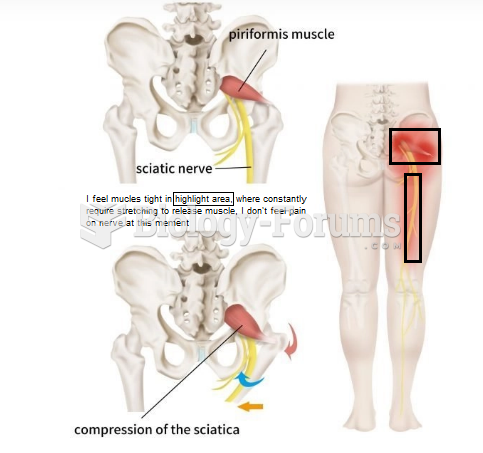Answer to Question 1
Chronic inflammation accompanies obesity, and inflammation contributes to chronic diseases. As a person grows fatter, lipids first fill the adipose tissue and then migrate into other tissues such as the muscles and liver. Fatty liver is a major contributor to the many diseases associated with obesity. This accumulation of fat, especially in the abdominal region, changes the body's metabolism, resulting in insulin resistance (and high blood glucose), low HDL cholesterol, high triglycerides, and high blood pressure. This cluster of symptomscollectivel y known as the metabolic syndromeincreases the risks for diabetes, hypertension, and atherosclerosis. Fat accumulation, especially in the abdominal region, activates genes that code for proteins (adipokines) involved in inflammation. Furthermore, although relatively few immune cells are commonly found in adipose tissue, weight gain significantly increases their number and their role in inflammation. Elevated blood lipidswhether due to obesity or to a high-fat dietalso promote inflammation. Together, these factors help to explain why chronic inflammation accompanies obesity and how obesity contributes to the metabolic syndrome and the progression of chronic diseases. Even in healthy youngsters, body fat correlates positively with chronic inflammation. As might be expected, weight loss improves insulin resistance, reduces the number of immune cells in adipose tissue, and changes gene expression to reduce inflammation.
Answer to Question 2
The location of fat on the body may influence health as much, or more than, total fat alone. Visceral fat that is stored around the organs of the abdomen is referred to as central obesity or upper-body fat. Much research supports the widely held belief that central obesitysignificantl y and independently of BMIcontributes to heart disease cancers, diabetes, and related deaths.
Visceral fat is most common in men and to a lesser extent in women past menopause. Even when total body fat is similar, men have more visceral fat than women. Subcutaneous fat around the hips and thighs, sometimes referred to as lower-body fat, is most common in women during their reproductive years, and is associated with lower heart disease risks.







